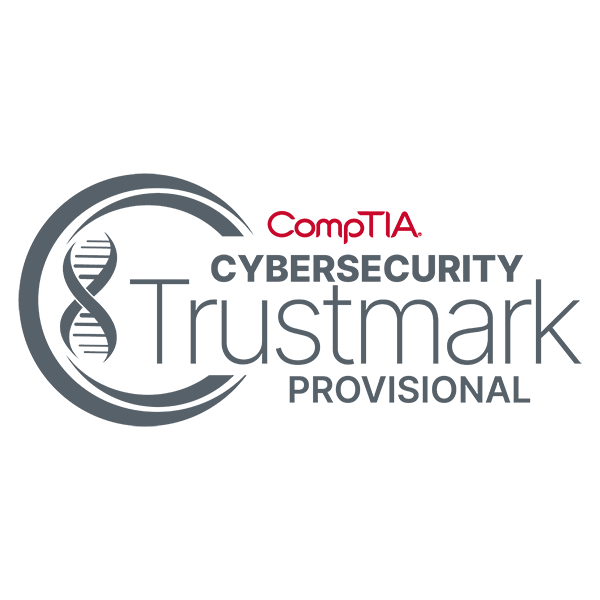Virtual private networks are vulnerable to an exploit that was recently brought to light. Cisco has announced that this exploit undermines its ASA, or Adaptive Security Appliance tool. If this issue isn’t patched immediately, you could find your organization vulnerable through remote code exploitation.
This VPN bug can leverage the ASA operating system to enable hackers to breach Cisco Adaptive Security Appliance security devices. According to Cisco, this Secure Sockets Layer (SSL) can “allow an unauthenticated, remote attacker to cause a reload of the affected system or to remotely execute code.”
This means that an attacker could hypothetically gain complete access to a system and control it – a prospect that any business should see the threat in, especially where their physical security is concerned.
Severity and Affected Devices
In fact, this vulnerability has been ranked as a 10 out of 10 on the Common Vulnerability Score System, making it one of the top vulnerabilities ranked.
Granted, this vulnerability only goes into effect if WebVPN has been enabled, but that doesn’t mean that you can overlook this threat. ZDNet provides the following list of affected devices:
- 3000 Series Industrial Security Appliance (ISA)
- ASA 5500 Series Adaptive Security Appliances
- ASA 5500-X Series Next-Generation Firewalls
- ASA Services Module for Cisco Catalyst 6500 Series Switches and Cisco 7600 Series Routers
- ASA 1000V Cloud Firewall
- Adaptive Security Virtual Appliance (ASAv)
- Firepower 2100 Series Security Appliance
- Firepower 4110 Security Appliance
- Firepower 9300 ASA Security Module
- Firepower Threat Defense Software (FTD).
Additionally, Cisco has emphasized the importance of securing email communication channels, recommending the use of Cisco Secure Email Gateway to protect against email-based threats.
History and Discovery of the Vulnerability
When it was first discovered, this bug had yet to be used “in the wild,” but Cisco was aware of some attempts to change that. This exploit targeted a bug from seven years ago, with a proof of concept demonstrating the use of the exploit – or at least trying to.
The proof of concept only resulted in a system crash, but that doesn’t change the fact that this vulnerability can be exploited in other ways, too.
Unfortunately, this vulnerability has now been observed in use, and worse, Cisco’s first attempt to patch it didn’t see to all considerations. As it turned out, there were more attack vectors and features that were not yet identified, as so were not addressed by the patch.
However, Cisco has now released an updated patch, which you need to implement as soon as possible. Otherwise, you are opening up your business security to greater risk. It is always a better practice to attend to known vulnerabilities post haste, as the longer your business is vulnerable, the more likely it is that someone will take advantage of that.
Ongoing Vigilance and Future Threats
Furthermore, it is also crucial that you stay cognizant of any and all vulnerabilities that are present in your mission-critical software and hardware solutions. This bug is not an isolated case. Others like it have been found before, and more will certainly pop up in the future.
Hackers and cybercriminals are constantly working to overcome the security features that software developers implement. They often look for ways to bypass configured access controls to gain unauthorized access.
It is your responsibility to ensure that you protect your business by implementing security patches and updates promptly. Additionally, maintaining the security of management interfaces like the Cisco Integrated Management Controller is crucial to prevent unauthorized access and control over your network devices.
Best Practices for VPN Security
Securing your virtual private network (VPN) and remote access VPN services is crucial to safeguarding your organization’s data and underlying operating system from unauthorized access and potential cyberattacks. Implementing robust security measures can prevent vulnerabilities like the recently discovered Cisco ASA exploit.
Here are some general best practices for securing VPNs and preventing similar issues in the future:
1. Regularly Update and Patch VPN Software
Ensure that your VPN software, including firmware and associated security devices, is always up-to-date with the latest patches and updates. Regular updates address known vulnerabilities and improve the overall security posture of your VPN infrastructure, including Cisco Firepower Threat Defense.
2. Implement Strong Authentication Mechanisms
Use multi-factor authentication (MFA) for accessing your VPN. MFA adds an additional layer of security by requiring users to provide multiple forms of verification, reducing the risk of unauthorized access even if login credentials are compromised.
3. Use Strong Encryption Protocols
Deploy strong encryption protocols such as AES-256 to protect data transmitted through the VPN. Ensure that both the VPN Cisco secure client and server are configured to use the most secure encryption methods available to prevent data interception and tampering.
4. Restrict Access and Implement Least Privilege
Limit VPN access to only those users who need it for their work. Implement the principle of least privilege, ensuring that users have the minimum level of access necessary to perform their tasks. Regularly review and update access controls to prevent unnecessary access.
5. Monitor and Log VPN Activity
Continuously monitor VPN usage and log all access attempts and activities. Implementing a robust logging and monitoring system helps detect suspicious behavior and potential security incidents early, allowing for prompt response and mitigation.
6. Conduct Regular Security Audits and Penetration Testing
Perform regular security audits and penetration testing on your VPN infrastructure to identify and address vulnerabilities before they can be exploited. These assessments can reveal weaknesses in your security posture and help you implement necessary improvements.
7. Educate and Train Employees
Provide regular training and awareness programs for employees on VPN security best practices and the importance of adhering to security policies. Educated employees are less likely to fall victim to phishing attacks and other social engineering tactics that could compromise VPN security.
8. Disable Unnecessary Services and Features
Disable any unused or unnecessary services and features on your VPN devices. Reducing the attack surface minimizes potential entry points for a local attacker, making it more difficult for them to exploit vulnerabilities.
9. Implement Network Segmentation
Segment your network to limit the reach of potential attackers who gain access through the VPN. Network segmentation involves dividing your network into smaller, isolated segments, which helps contain and mitigate the impact of security breaches.
10. Use Up-to-Date Antivirus and Anti-Malware Solutions
Ensure that all devices connected to the VPN have up-to-date antivirus and anti-malware solutions installed. These solutions help detect and prevent malware infections that could compromise your VPN security.
11. Utilize Cisco AsyncOS Software
Incorporate Cisco AsyncOS software into your security strategy. This software enhances the performance and security of your Cisco security appliances, providing robust protection against advanced threats and helping to ensure the integrity of your network infrastructure.
By following these best practices, you can significantly enhance the security of your VPN infrastructure and protect your organization from potential cyber threats. Staying proactive and vigilant in your security efforts is essential to maintaining a secure and resilient network environment.

How Succurri Can Help
Succurri can assist you with that. We can help you ensure that your patches and updates are up-to-date, often without needing to take the time needed for an on-site visit and handling it all remotely. For more information, give us a call at (206) 340-1616.
Our expertise in network access manager tools and VPN security ensures that your organization’s remote access infrastructure remains secure and resilient against potential threats.
Content to be optimized
The Cisco Vulnerability Requires Multiple Patches
Virtual private networks are vulnerable to an exploit that was recently brought to light. Cisco has announced that this exploit undermines its ASA, or Adaptive Security Appliance tool. If this issue isn’t patched immediately, you could find your organization vulnerable through remote code exploitation.
This VPN bug can leverage the ASA operating system to enable hackers to breach Cisco security devices. According to Cisco, this Secure Sockets Layer (SSL) can “allow an unauthenticated, remote attacker to cause a reload of the affected system or to remotely execute code.” This means that an attacker could hypothetically gain complete access to a system and control it – a prospect that any business should see the threat in, especially where their physical security is concerned. In fact, this vulnerability has been ranked as a 10 out of 10 on the Common Vulnerability Score System, making it one of the top vulnerabilities ranked.
Granted, this vulnerability only goes into effect if WebVPN has been enabled, but that doesn’t mean that you can overlook this threat. ZDNet provides the following list of affected devices:
- 3000 Series Industrial Security Appliance (ISA)
- ASA 5500 Series Adaptive Security Appliances
- ASA 5500-X Series Next-Generation Firewalls
- ASA Services Module for Cisco Catalyst 6500 Series Switches and Cisco 7600 Series Routers
- ASA 1000V Cloud Firewall
- Adaptive Security Virtual Appliance (ASAv)
- Firepower 2100 Series Security Appliance
- Firepower 4110 Security Appliance
- Firepower 9300 ASA Security Module
- Firepower Threat Defense Software (FTD).
When it was first discovered, this bug had yet to be used “in the wild,” but Cisco was aware of some attempts to change that. This exploit targeted a bug from seven years ago, with a proof of concept demonstrating the use of the exploit – or at least trying to. The proof of concept only resulted in a system crash, but that doesn’t change the fact that this vulnerability can be exploited in other ways, too.
Unfortunately, this vulnerability has now been observed in use, and worse, Cisco’s first attempt to patch it didn’t see to all considerations. As it turned out, there were more attack vectors and features that were not yet identified, as so were not addressed by the patch.
However, Cisco has now released an updated patch, which you need to implement as soon as possible. Otherwise, you are opening up your business security to greater risk. It is always a better practice to attend to known vulnerabilities post haste, as the longer your business is vulnerable, the more likely it is that someone will take advantage of that.
Furthermore, it is also crucial that you stay cognizant of any and all vulnerabilities that are present in your mission-critical software and hardware solutions. This bug is not an isolated case. Others like it have been found before, and more will certainly pop up in the future. Hackers and cybercriminals are constantly working to overcome the security features that software developers implement. It is your responsibility to ensure that you protect your business by implementing security patches and updates promptly.
Succurri can assist you with that. We can help you ensure that your patches and updates are up-to-date, often without needing to take the time needed for an on-site visit and handling it all remotely. For more information, give us a call at (206) 340-1616.
More Helpful Readings







